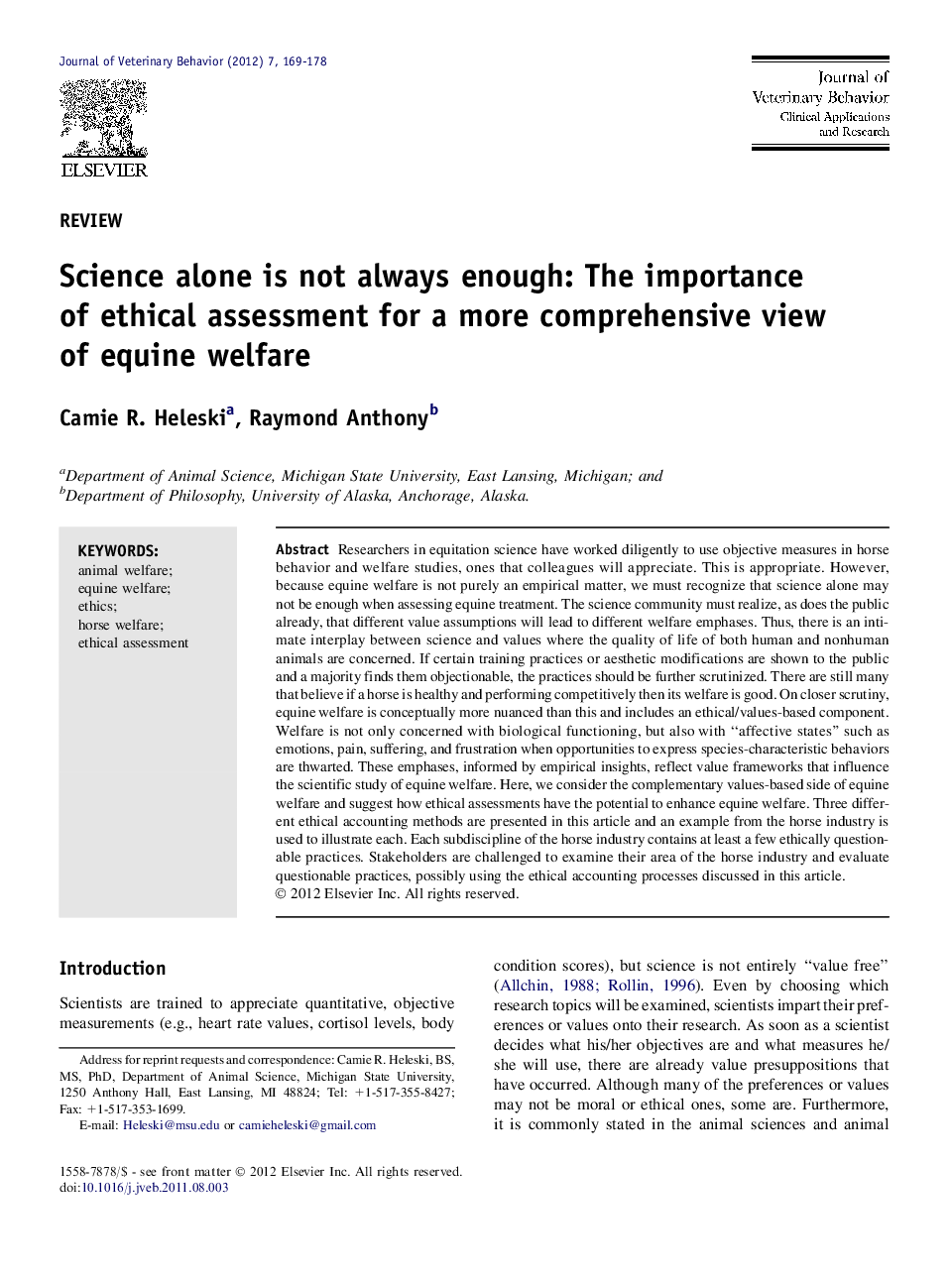| Article ID | Journal | Published Year | Pages | File Type |
|---|---|---|---|---|
| 2399000 | Journal of Veterinary Behavior: Clinical Applications and Research | 2012 | 10 Pages |
Researchers in equitation science have worked diligently to use objective measures in horse behavior and welfare studies, ones that colleagues will appreciate. This is appropriate. However, because equine welfare is not purely an empirical matter, we must recognize that science alone may not be enough when assessing equine treatment. The science community must realize, as does the public already, that different value assumptions will lead to different welfare emphases. Thus, there is an intimate interplay between science and values where the quality of life of both human and nonhuman animals are concerned. If certain training practices or aesthetic modifications are shown to the public and a majority finds them objectionable, the practices should be further scrutinized. There are still many that believe if a horse is healthy and performing competitively then its welfare is good. On closer scrutiny, equine welfare is conceptually more nuanced than this and includes an ethical/values-based component. Welfare is not only concerned with biological functioning, but also with “affective states” such as emotions, pain, suffering, and frustration when opportunities to express species-characteristic behaviors are thwarted. These emphases, informed by empirical insights, reflect value frameworks that influence the scientific study of equine welfare. Here, we consider the complementary values-based side of equine welfare and suggest how ethical assessments have the potential to enhance equine welfare. Three different ethical accounting methods are presented in this article and an example from the horse industry is used to illustrate each. Each subdiscipline of the horse industry contains at least a few ethically questionable practices. Stakeholders are challenged to examine their area of the horse industry and evaluate questionable practices, possibly using the ethical accounting processes discussed in this article.
